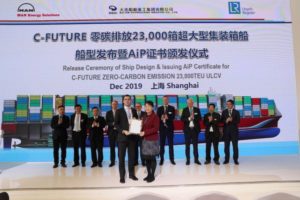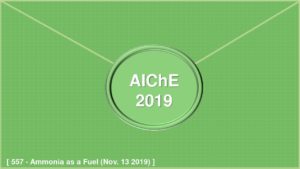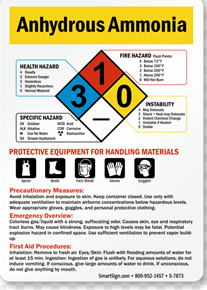Ammonia Safety
Ammonia Combustion and Public Perception
Ammonia Safety — Managing the Risks
Korean Register Sees Ammonia as Preferred Alternative Maritime Fuel
Last week the classification society Korean Register of Shipping (KR) released Forecasting the Alternative Marine Fuel: Ammonia, a “technical document on the characteristics and the current status of ammonia as ship fuel.” One hesitates to take the title too literally, but the report really does forecast that ammonia will be the alternative marine fuel. Over the last year, a number of maritime transport stakeholders – engine producers, government agencies, other classification societies – have identified ammonia as a promising means of industry decarbonization. But in joining the group, KR makes a notably explicit and complete case in ammonia’s favor.
Ammonia-fueled ships: entering the design phase
Three separate projects to design a range of ammonia-fueled vessels were announced last week at a shipping industry conference in China. Lloyd's Register has granted Approval in Principle (AiP) for the design of a 180,000 ton bulk carrier. ABS announced a project to "produce designs for an ammonia-fueled Chittagongmax container carrier of 2700 TEU capacity." And Lloyd's Register also announced a project for "an ammonia-fuelled 23,000 TEU Ultra-Large Container Ship (ULCS) concept design." All three projects are working with the two-stroke ammonia engine developed by MAN Energy Solutions, and all are led by major shipbuilders in China.
Technical & Economic Study for Commercial Ships with HFO, LNG and NH3 As Fuel
Ammonia – Could it replace HFO/LSFO?
Safe and Effective Application of Ammonia As a Marine Fuel
Safety of Ammonia As Hydrogen and Energy Carriers
Safety of Ammonia Energy: First Up, the Maritime Use Case?
ANNUAL REVIEW 2019: Ammonia. A hazardous chemical, no doubt. But is it too hazardous to use as an energy vector? This is a legitimate question that must be addressed as other aspects of the ammonia energy concept advance. It is also a question whose unique context can be evoked with two other questions: Haven’t the safety issues already been identified and resolved over the last 100 years of widespread agricultural and industrial use? And even if they have, how will the general public react when proposals for expanded ammonia infrastructure suddenly appear? The earliest tip of this particular iceberg came into view this year when the Dutch naval architecture firm C-Job released Safe and Effective Application of Ammonia as a Marine Fuel.







